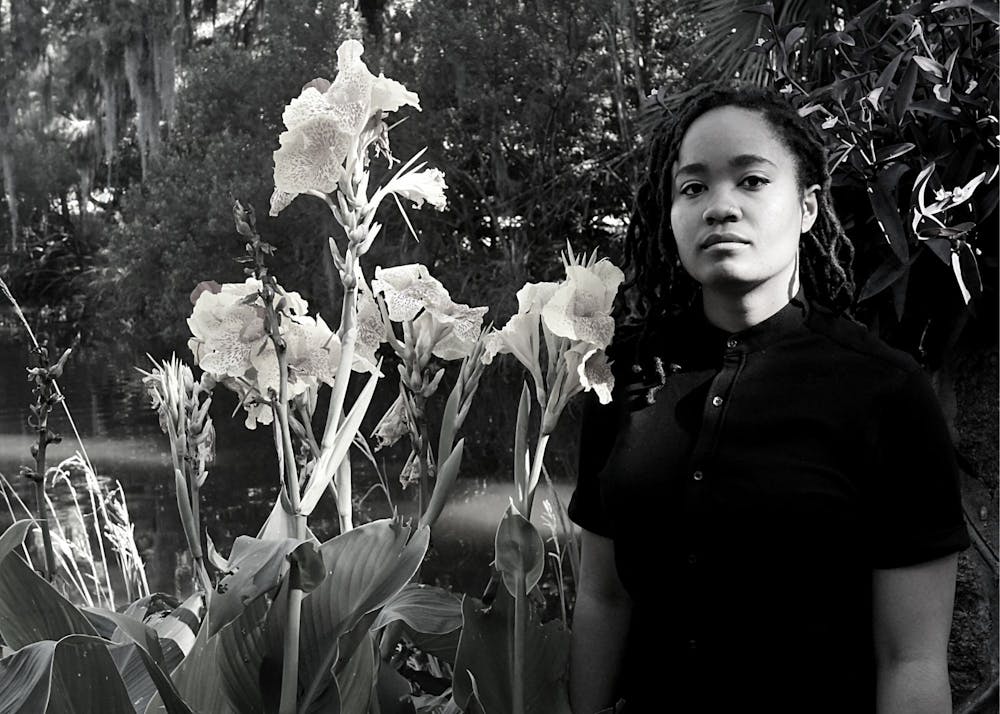The Sachs Program for Arts Innovation announced the eight project awardees of grants for proposals led by or primarily serving Black artists and practitioners within the Penn community.
The winners, announced on July 1, consist of Penn staff, alumni, artists, graduate students, and Ph.D. students who will pursue a broad range of multimedia projects. Funded projects include a recipe book, workshop series, online performances, a public art portrait series, life-size self-portraits, video presentations, sound performances, and comics.
The grant selection committee consisted of five Sachs staff and advisory board members. Sachs Associate Director Chloe Reison, who sat on the committee, said they received a good number of applications which made it difficult to select the grant awardees. Project proposals were judged according to innovation, diversity in project type, and impact.
The committee focused on the impact the grant would have on the artists and practitioners, Sachs Executive Director John McInerney said, rather than the impact their projects would have on the public — a different process from other grant categories within Sachs.
“This was a much more open process about the artists themselves,” McInerney said.
School of Arts and Sciences Ph.D. third-year Maris Jones was awarded funding for her project ‘Recipes for the Revolution: Meals Our Ancestors Made Possible,’ which she said is very personal to her.
“[Cooking] is a way for me to feel grounded and meet a very basic need, but also to connect to my ancestors and family, who are not in Philadelphia with me,” Jones said. “My family is from the Bahamas and New Orleans, and I grew up between those places.”
Jones said she will create two copies of the recipe book: a complete version and one that is almost completely redacted, without any of the ingredients indigenous to the places she calls home.
RELATED:
Sachs Program for Arts Innovation creates grant for Black artists at Penn
Black-owned Hakim’s Bookstore in West Phila. gains support amid George Floyd protests
2018 College graduate and Kelly Writers House post-bac fellow Maya Arthur’s ‘Sickle’ is a multimedia project centered around sickle cell anemia. Through the Sachs grant, Arthur will use printmaking and poetry to create an experimental publication sharing stories of those who have been impacted by the disorder. This is a deeply personal project to Arthur, who has SCA, an inherited disorder that results in sickle-shaped red blood cells and many other complications, including unbearable pain crises.
“It’s really hard to go to the hospital because sickle cell anemia is still such an unknown disorder,” Arthur said. “Not that many people know about it because it primarily affects the Black community and there isn’t real research focusing specifically on it. It’s like this sort of invisible illness.”
SCA occurs in one out of every 365 Black births and one in every 13 Black babies is born with the sickle cell trait.
Through her multimedia project, Arthur hopes to learn more about the disorder itself, feel more connected to others with SCA, and explore the implicit biases in the medical industry.
“I’m just really curious about the arduous process it can be to receive care as a Black person. I’ve been thinking about the ramifications of medical professionals’ assumption [of Black people not feeling as much pain as their other patients] and how this sort of loneliness and abandonment of care adds to the pain you’re feeling,” Arthur said.
Fields Harrington, a 2019 Weitzman graduate and one of the first University alumni in Sachs’ history to receive a grant, was awarded funding for his project ‘Transmission as Resistance: Redox Drip.’
Redox Drip is a sculpture installation featuring two speakers that face each other, producing a chemical reaction when properly installed.
One part of Harrington's sculpture is an iodine clock reaction demonstrating a clear solution becoming a black solution, inspired by Frantz Fanon’s 'Black Skin, White Mask,' which studies the Black psyche in a white world. The other part of the sculpture is a distillation setup inspired by Black 19th-century inventor and chemical engineer Norbert Rilleux.
“It’s not often that you hear about Black inventors, so I wanted to work with that and make my own distillation system,” Harrington said.
After working on this project for about a year, Harrington is planning on using the Sachs grant to purchase a device that can pick up electromagnetic frequencies and thus heighten the noises and reaction sounds of the sculpture. Harrington said this is a way to amplify Black voices in order to temporarily displace the history of science and resist the erasure of Black inventors and intellectuals throughout history.
“This is the start of this awesome, beautiful ripple effect that’s going to hopefully spread through our community and outside our community that can really touch a lot of people in different spaces,” Sachs Administrative Assistant Tamara Suber, who sat on the grant selection committee, said.









